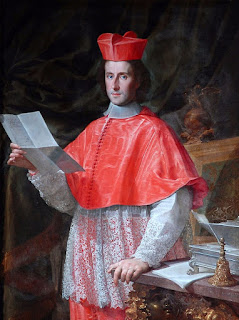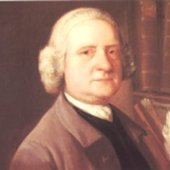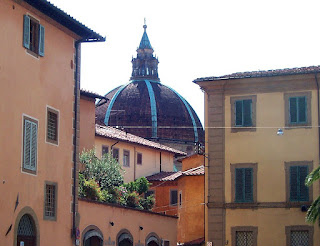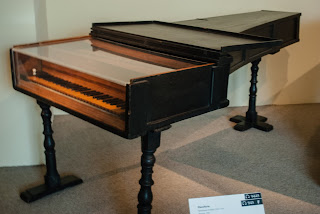Musician devoted his life to passing on his composing skills to others
An esteemed composer of religious and instrumental music, Francesco Durante was born on this day in 1684 at Frattamaggiore near Naples.
Francesco Durante numbered many famous
pupils when he taught in Naples
Durante was a highly regarded teacher at the Sant'Onofrio Conservatorio and the Santa Maria di Loreto Conservatorio and was also Chapelmaster at the Conservatorio dei Poveri di Gesú Cristo in Naples.
He had some famous pupils, among whom were Niccoló Jommelli, Niccoló Piccinni and Giovanni Battista Pergolesi, who became leading composers of the Neapolitan School of 18th century opera.
Durante studied music in Rome and at Naples, where he was a pupil at San Onofrio and is believed to have studied under Alessandro Scarlatti. He began his own teaching career at the Sant'Onofrio Conservatorio in 1710.
Between 1728 and 1742 he also taught at Santa Maria Loreto and the Conservatorio dei Poveri di Gesú Cristo. He succeeded Leonardo Leo as principal teacher at Sant'Onofrio Conservatorio in 1745.
There was always rivalry between Leo’s students and his own pupils, who at various times included the composers Giovanni Paisiello, Tommaso Traetta and Leonardo Vinci.
Durante’s own compositions included motets, masses, requiems and oratorios. A pastoral mass for four voices and a setting of the Lamentations of Jeremiah are considered among his best works. He also composed for the harpsichord and for stringed instruments.
A collection of his works was presented to the Bibliothèque National in Paris by a Neapolitan collector of art and music and the Imperial library in Vienna also houses a collection of his manuscripts. He seems to have composed mainly sacred works and is considered by experts to have been one of the best composers of church music of his period.
Durante, who was married three times, died in Naples in 1755, aged 71.
Travel tip:
The Piazza Umberto I in Frattamaggiore, with the
campanile of the Basilica of San Sossio
Frattamaggiore, where Durante was born, is a comune of Naples, about 15km (9 miles) north of the city, and 15 km southwest of Caserta. Known as Fratta to the locals, Frattamaggiore was named a Benedictine city in 1997 and was awarded the title of City of Art in 2008. It is thought to date back to before Roman times, but the first recorded mention of Frattamaggiore was in 921 AD. The patron saint of Frattamaggiore is Saint Sossius, or Sosius. His remains were first preserved at Miseno, but after the town was destroyed by the Saracens his followers moved to live in Frattamaggiore. The saint’s relics were recovered by Benedictines and preserved in a convent in Naples, but after the convent was suppressed during Napoleonic times, his relics were transferred to Frattamaggiore where they are preserved in a basilica dedicated to him.
Travel tip:
The entrance to the Sant'Onofrio
Conservatory at Porta Capuana
The Conservatorio di Sant'Onofrio at Porta Capuana, where Durante taught at the beginning and end of his career, was one of the four original Naples music conservatories. Founded in 1588, it was developed first as an orphanage. Almost one fifth of the students at the Conservatorio di Sant'onofrio were castrati. Its popularity declined during the Napoleonic period, and only 30 students remained when the conservatory merged with that of Santa Maria di Loreto in 1797. Porta Capuana is now a free-standing gateway that was once part of the Aragonese walls of the city and is situated between the city’s main railway station and the Duomo. The Conservatorio di Sant'onofrio, which was in time absorbed into the Naples Conservatory, used to be close to the Castel Capuano, which was originally a 12th century fortress but has been modified several times. Until recently, the castle was home to the city’s Hall of Justice, also known as the Vicaria, which housed legal offices and a prison.
More reading:
The opera buffa genius of Giovanni Battista Pergolesi
Why Domenico Cimarosa's Il Matrimonio Segreto is seen as one of the greatest comic operas
First night at Teatro di San Carlo
Also on this day:
1425: The birth of Bianca Maria Visconti, Duchess of Milan
1675: The birth of Pope Benedict XIV
1941: The birth of cartoonist Franco Bonvicini
1958: The birth of crime writer Maurizio De Giovanni
1996: The death of car designer Dante Giacosa
(Picture credits: conservatory gate by Baku; via Wikimedia Commons)

















